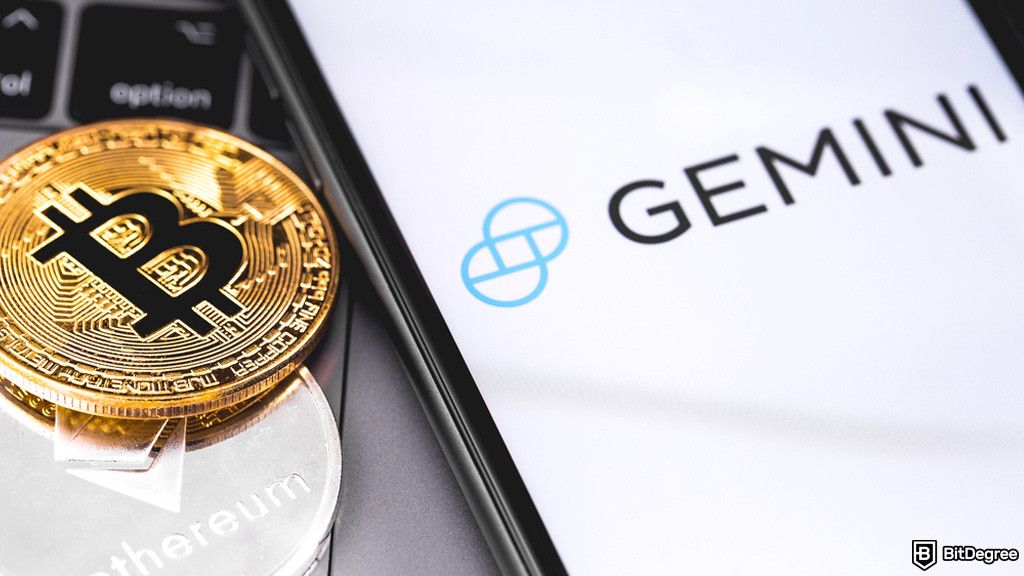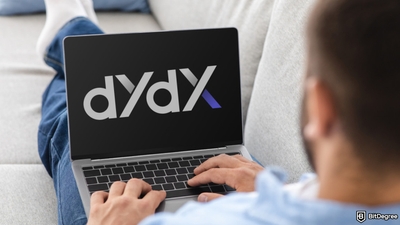Key Takeaways
- Gemini fees include various charges, such as trading, withdrawal, and deposit fees, which can impact the cost of using the platform;
- Understanding Gemini’s tiered structure and fee differences for payment methods can help you minimize expenses and trade more cost-effectively;
- While Gemini fees may differ from those on exchanges like Binance, Coinbase, and Kraken, knowing how to navigate them ensures a better overall trading experience.
Free Airdrop Season 7 is LIVE! Answer fun questions or do simple tasks to earn rewards from the $30K BitDegree prize pool. Participate Now ! 🔥
When it comes to choosing a cryptocurrency exchange, fees are one of the most important factors to consider. Gemini fees, like those on any exchange, can have a big impact on your overall trading experience.
Whether you're buying, selling, or withdrawing crypto, every transaction comes with its own set of costs. Compared to competitors like Binance, Coinbase, and Kraken, Gemini offers a unique fee structure, and understanding it can help you make the most of your trades.
Gemini is known for its security and regulatory compliance, making it a trusted choice for many traders. But just like with any exchange, not knowing how the fees work could leave you paying more than necessary. In this guide, I’ll be breaking down everything you need to know about Gemini exchange fees, so you can navigate the platform confidently.
By the end of this article, you'll have a clear understanding of the different fees associated with trading on Gemini and how they compare to other major exchanges. Let’s dive in and make sure you’re getting the best value out of your crypto trades!

Did you know?
Subscribe - We publish new crypto explainer videos every week!
How Do KYC & AML Work in Crypto? (Explained)


Table of Contents
- 1. Gemini Fees: An Overview
- 2. Trading Fees on Gemini
- 2.1. Basic Web Interface Fees
- 2.2. Mobile Application Fees
- 2.3. ActiveTrader Fees
- 3. Deposit Fees
- 4. Withdrawal Fees
- 5. Other Fees
- 5.1. Staking Fees
- 5.2. Internal Transfer Fees
- 5.3. Custody Fees
- 6. Gemini Fees Compared with Other Exchanges
- 6.1. Gemini VS Coinbase Fees
- 6.2. Gemini VS Binance Fees
- 6.3. Gemini VS Kraken Fees
- 7. Understanding Crypto Exchange Fees
- 7.1. Why Pay Fees?
- 7.2. Typical Types of Crypto Exchange Fees
- 8. Conclusions
Gemini Fees: An Overview
Before we begin, I’d like to acknowledge that learning about Gemini fees can be a bit confusing at first due to the platform’s various fee structures. But, there’s no need to worry! I’ll try to explain Gemini fees as clearly as possible, so you don’t have to scratch your head while figuring out why you have to pay a 0.50% convenience fee when purchasing crypto on Gemini.
Latest Deal Active Right Now:Head to BitDegree Missions, gather as many Bits as possible & claim your stake of the $30,000 Prize Pool! Don't waste your time & start collecting Bits by completing Missions and referring friends.
First off, Gemini offers a variety of fee schedules depending on product & usage level. However, one thing for sure is that limit orders are charged using the maker-taker fees model. This means that liquidity-making orders are charged different fees than liquidity-taking orders.
If you execute a trade right away, your order removes liquidity from the market, making you a taker and subject to a taker fee. If your order remains on the order book and is not immediately filled, it adds liquidity to the market, making you a maker and subject to a maker fee.
Most Gemini transaction fees also use a tier-based discount structure. What does it mean? Basically, users with higher recorded trading volume can enjoy lower fees. In most cases, your fee rates will be determined by your gross trading volume over the last 30 days. And that’s enough for the overview. Let’s go into the detailed structure starting from Gemini trading fees.
Trading Fees on Gemini
As I briefly mentioned earlier, Gemini trading fees will vary depending on how you trade and which platform you’re using. The three main ways you can trade using Gemini are via its basic web interface, the ActiveTrader interface, and the mobile application. Let’s dive deeper into the detailed Gemini trading fees for each method.
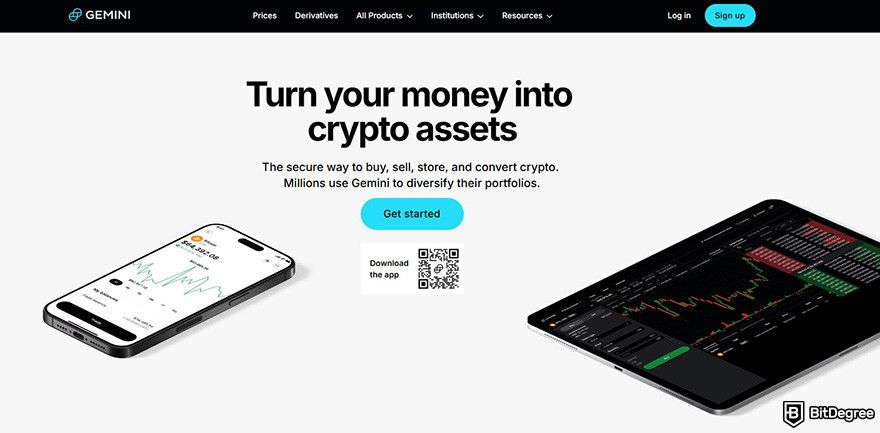
Basic Web Interface Fees
Gemini's basic web interface is an exchange platform you can access via its official website. All you have to do is sign in to your account (or make a new account if you don’t have one). The basic web exchange provides a user-friendly interface for buying, selling, and managing your cryptocurrency assets. I think this is the go-to option, especially for those new to crypto trading.
All orders placed via the basic web exchange incur both a convenience fee (0.50%) and a transaction fee. Before you place your Web Order, you will be quoted a firm price that includes the convenience fee. After that, Gemini will display your transaction fee, which is determined according to the amount of your order.
Here is the fee schedule structure for instant orders made via Gemini’s basic web interface:
| Web Order Amount - USD | Transaction Fee - USD |
|---|---|
| ≤ $10.00 | $0.99 |
| > $10.00 but ≤ $25.00 | $1.49 |
| > $25.00 but ≤ $50.00 | $1.99 |
| > $50.00 but ≤ $200.00 | $2.99 |
| > $200.00 | 1.49% of your order value |
Table: Instant order fee schedule for Gemini's basic web exchange.
Gemini charges transaction and convenience fees in the transaction fiat currency. For example, when you purchase BTC with USD, your fees will be charged in USD. Keep in mind that these fees may differ depending on the currency you’re using. At the time of writing this article, Gemini supports USD, AUD, CAD, COP, EUR, GBP, HKD, and SGD.
I know it can be pretty hard to picture how these fees work just by simply reading through my explanation. So, let’s take a look at this scenario on how Gemini applies this fee structure:
James wants to buy $100 worth of Bitcoin (BTC) on Gemini. The current market price of BTC is $4000. However, Gemini adds a 0.5% convenience fee, making the actual price James pays $4020 per BTC.
When James places his $100 order, Gemini also charges a $2.99 transaction fee. So, after deducting this fee, James has $97.01 to spend on BTC. Dividing this amount by the quoted price of $4020, James can buy approximately 0.0241 BTC.
It's important to note that these fees are only charged when James's order is successfully filled.
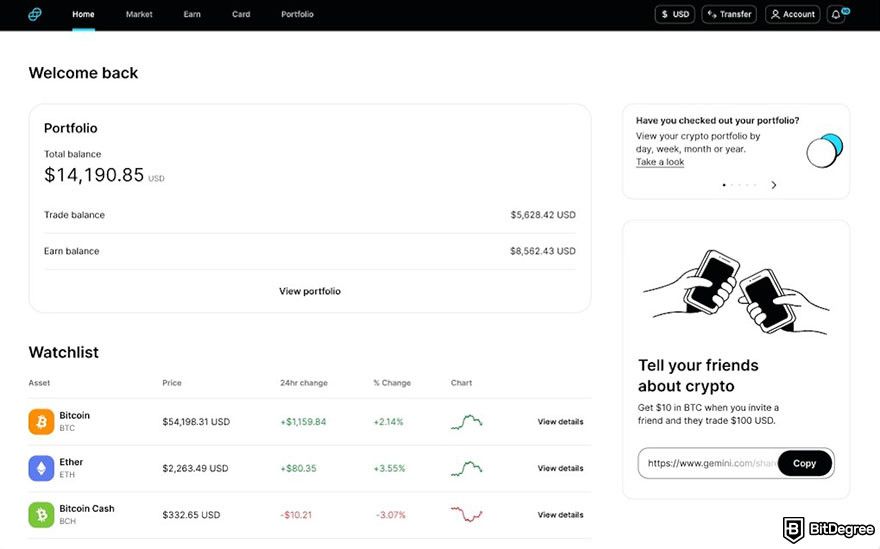
Additionally, Gemini applies maker-taker fees for limited orders made via its basic web exchange. As I covered in the overview section, your limit orders fee rate will be determined by your gross trading volume in notional USD across all of Gemini’s continuous order books over a 30-calendar-day trailing window.
The rate starts at 0.40% for the taker fee and 0.20% for the maker fee for volumes under $10,000 per month. You can enjoy lower fee rates as your trading volume increases. Users with a trading volume of more than $500 million may get 0.03% for takers and 0% fee for makers.
Mobile Application Fees
Just like other popular exchanges including Binance, Kraken, and Bybit, Gemini offers a mobile solution. This mobile app lets you access Gemini’s exchange on the go. Essential features available on the web exchange are present in this mobile app, making it a great substitution for those who prefer managing crypto through their phones.
Similar to the web exchange version, instant orders placed via the mobile app will incur both a convenience fee (0.50%) and a transaction fee. Here is the breakdown of Gemini exchange fees on its mobile app:
| Mobile Order Amount - USD | Transaction Fee - USD |
|---|---|
| ≤ $10.00 | $0.99 |
| > $10.00 but ≤ $25.00 | $1.49 |
| > $25.00 but ≤ $50.00 | $1.99 |
| > $50.00 but ≤ $200.00 | $2.99 |
| > $200.00 | 1.49% of your order value |
Table: Instant order fee schedule for Gemini's mobile app.
Your transaction and convenience fees on instant orders will be charged in the transaction fiat currency. Gemini fees for limit orders via the mobile app use the maker-taker fees model. And just like the web exchange version, your rates will be determined by your gross trading volume over a 30-calendar-day trailing window.
Gemini trading fees for limit orders on the mobile app are similar to its web exchange version. Starting from 0.40% for takers and 0.20% for makers, and going as low as 0.03% for takers and 0.00% for makers when trading over $500 million.
The platform calculates fees based on the total value of the trade (price multiplied by the amount of cryptocurrency bought or sold). The fee is either taken directly from the money you make from the trade or added to your account balance when the trade happens.

Another thing worth noting is that, unlike instant orders, fees for limit orders are charged in quote currency, or the second currency in the pair. For example, the transaction fee for ETH/BTC will be charged in BTC.
Take a look at this example scenario to understand the fee calculation better. Alan enters a limit sell order of 10 BTC with a limit price of $100 that fills as a maker at an average price of $101 per BTC. His fees paid are as follows:
- Order type: Limit
- Amount: 10 BTC
- Fill Price: $101
- Fee: 0.25%
- Fee Paid: $2.525
- Gross Sale Proceeds: $1,010
- Net Sale Proceeds: $1007.4750
Fees for limited sell orders are deducted from the proceeds of the resulting trade. On the other hand, fees for limit buy orders are added to the purchase price as the Order fills. These apply to all limit orders, including in the web exchange version.
ActiveTrader Fees
Other Gemini trading fees you need to know are the ones incurred in its ActiveTrader platform. This is an intermediate platform that offers a more sophisticated trading platform with advanced charting tools, order types, and customizable layouts. At the time of writing, the ActiveTrader interface is only available via the web exchange.

Orders placed via Gemini’s ActiveTrade interface are subject to maker-taker fees. It is worth mentioning that your order might incur both maker and taker fees. If part of your order is filled right away, you’ll pay a taker fee on that portion. Any remaining part of your order will stay on the order book, and when it’s eventually filled, a maker fee will apply to that portion.
Gemini exchange fees via the ActiveTrader interface also follow the same tier-based structure where users with higher trading volume can enjoy lower maker-taker fees. Keep in mind that Gemini charges fixed maker-taker fees of 0% and 0.01% respectively for the following stablecoin pairs regardless of your trading volume:
- USDC/USD
- DAI/USD
- GUSD/SGD
- USDT/USD
- GUSD/GBP
All in all, Gemini exchange fees on the ActiveTrader interface follow the same structure as the limit orders on the other two options I discussed earlier.
Deposit Fees
The platform offers several ways to deposit funds into your account. These include bank transfers via ACH, wire transfers, PayPal, and SGD FAST Transfers. Here are the detailed Gemini deposit fees for each method:
| Method | Fee |
|---|---|
| ACH | Free |
| Wire Transfer | Free |
| PayPal | 2.50% of the total deposit amount |
| SGD FAST Transfers | Free |
| Crypto deposit | Free |
Table: Gemini's deposit method options and their associated fees.
Please remember that while Gemini doesn’t charge fees for some of the deposit methods, your bank may charge you a fee to wire money into your Gemini account. Make sure to check it to avoid any unexpected charges. Additionally, there are no fees for depositing crypto.
Withdrawal Fees
Gemini also supports the same multiple methods for funds withdrawal. You can cash out your assets into fiat currencies using ACH, wire transfer, SGD FAST Transfers, and other non-USD bank transfers, including CHAPS, FPS, SEPA, and BLINC. The Gemini withdrawal fees for fiat are as follows:
| Method | Fees |
|---|---|
| ACH | Free |
| USD Wire Transfer | $25 |
| Non-USD Bank Transfer | Free |
| SGD FAST Transfers | $3 |
Table: Gemini's withdrawal method options and their associated fees.
Gemini withdrawal fees for crypto assets work differently using a dynamic fee system. This fee is meant to cover the network fees that are paid to miners who process cryptocurrency transactions and secure the blockchain network. These network fees can fluctuate over time, depending on the level of network activity.
Gemini's dynamic withdrawal fees are designed to match these network fees, ensuring that you're not overcharged or undercharged. Gemini doesn't profit from these fees; they're simply passed on to the miners. The exact fee will be displayed to you before you confirm your withdrawal.
For withdrawals of ERC-20 tokens, you'll pay a gas fee for the specific token you're withdrawing. Gemini will cover the cost of converting the necessary amount of that token into Ethereum to pay the gas fee.
Other Fees
Aside from the essential Gemini fees for trading, depositing, and withdrawing funds, there are other fees you’ll need to know before using the platform. Let’s take a look at some of them:
Staking Fees
Gemini offers a staking feature that allows you to earn rewards on your eligible cryptocurrencies. By staking your crypto, you contribute to the security and validation of the proof-of-stake blockchain network[1]. In return, you receive a portion of the network's rewards.
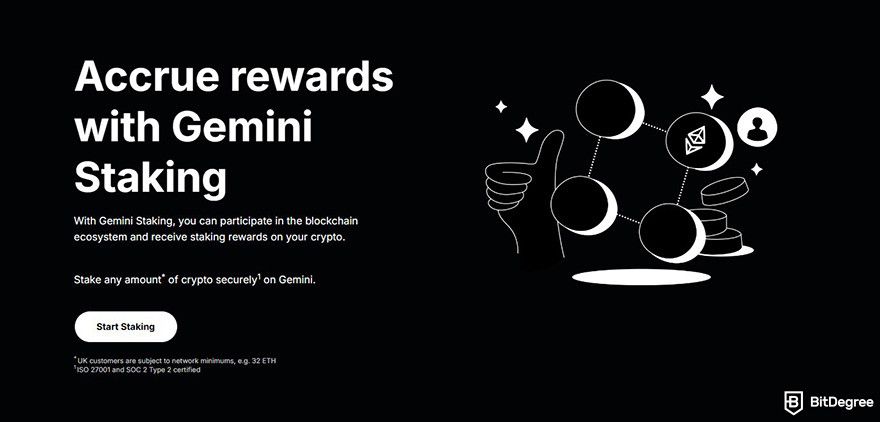
Gemini simplifies the staking process, making it accessible to users of all experience levels. You don't need to run complex nodes or have deep technical knowledge to participate. The platform handles the technical aspects of staking on your behalf, allowing you to earn rewards while your crypto remains securely stored on the platform.
Gemini fees for staking crypto are 15% of the rewards determined by the protocol. Some of these staking fees will be used to pay gas fees, third-party fees, and infrastructure costs associated with staking while the remainder will be kept by Gemini.

Did you know?
Subscribe - We publish new crypto explainer videos every week!
What is ENS? Ethereum Name Service Explained (ANIMATED)
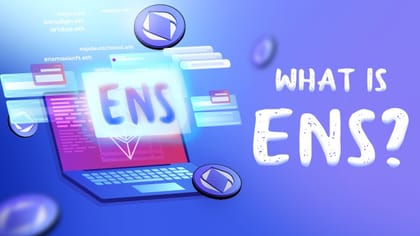

Internal Transfer Fees
I’ve covered Gemini transfer fees for sending crypto assets to an external wallet. What about transferring within Gemini’s ecosystem? Transferring crypto from Gemini Exchange to Gemini Custody is free. However, you will have to pay a fee of $125 per withdrawal when transferring crypto from Gemini Custody to Gemini Exchange.
Custody Fees
Custody fees are charges levied by financial institutions or custodians for the safekeeping and management of your assets. Essentially, you're paying for the service of having your crypto stored securely and managed professionally.
In Gemini, you will incur a 0.40% annualized custody fee of the total value of your assets stored or a minimum monthly fee of $30 per asset type, whichever is higher.
Gemini Fees Compared with Other Exchanges
Now that we’ve learned about the details of Gemini fees, it is time to see how they compare with other big names in the industry including Coinbase, Binance, and Kraken. Let’s take a look at the key differences between these exchanges and see if they offer better fees than Gemini.
Gemini VS Coinbase Fees
Coinbase is one of the world’s most popular cryptocurrency platforms, known for its user-friendly interface and secure trading environment. Founded in 2012, Coinbase enables individuals and institutions to buy, sell, and manage various digital assets, including Bitcoin, Ethereum, and many others.
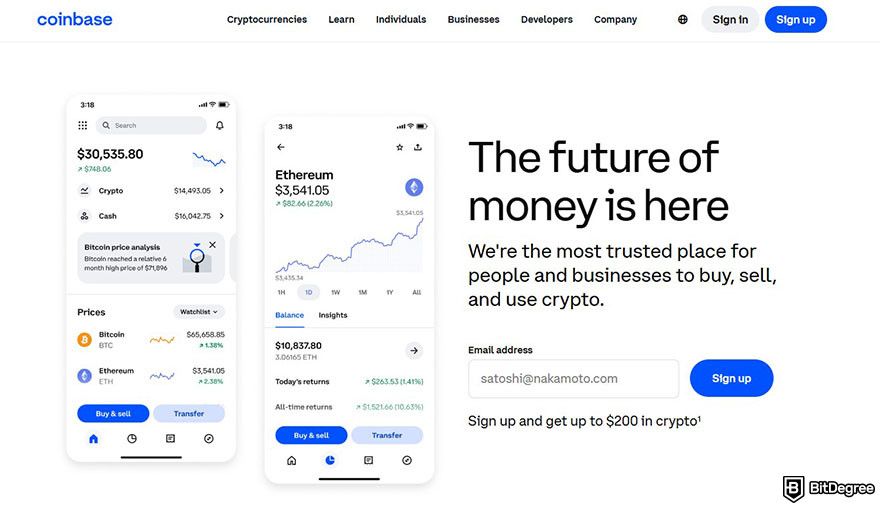
When discussing Gemini VS Coinbase fees, both use the maker-taker fees model for their trading platform. What makes comparing Gemini transaction fees and Coinbase’s a bit tricky is the fact that the latter doesn’t have a fixed structure.
The fees on Coinbase are calculated at the time you place your order and can be influenced by several factors. These include your chosen payment method, order size, market conditions, jurisdictional location, assets, and other costs the platform incurs to facilitate your transaction.
Let’s take a look at Gemini VS Coinbase fees for makers and takers:
| Exchange | Taker fees range | Maker fees range |
|---|---|---|
| Gemini | 0.03% – 0.40% | 0.00% – 0.20% |
| Coinbase | 0.05% – 0.60% | 0.00% – 0.40% |
Table: The comparison between Gemini's and Coinbase's maker-taker fees.
You can see that Gemini’s maker-taker fees are slightly lower than Coinbase’s. But obviously, these rates will vary depending on your trading volume since both exchanges use tier-based trading fee structures.
However, Coinbase also has other options such as Coinbase Advanced and Coinbase One that charge no fees for certain transactions. Furthermore, Coinbase also offers lower fees for crypto conversion of 0.50% compared to the Gemini transaction fee of 1.49% for orders over $200.
Next, let’s take a look at Gemini VS Coinbase fees for deposit and withdrawal. Coinbase offers several different payment methods including SEPA (for EUR) and Swift (for GBP):
| Method | Deposit Fee | Withdrawal Fee |
|---|---|---|
| ACH | Free | Free |
| Wire (USD) | $10 | $25 |
| SEPA (EUR) | €0.15 | Free |
| Swift (GBP) | Free | £1 |
Table: The deposit and withdrawal fees on Coinbase.
If we look at the two similar methods, both Coinbase and Gemini transfer fees offer free deposit and withdrawal for bank transfer via ACH. On the other hand, Coinbase charges fees for these transactions via wire transfer.

|

|
|
|---|---|---|
| $25K | - | |
| Up to 3% | Free | |
| Up to 0.60% | Up to 1% | |
|
Visit site
Read review |
Visit site
Read review |
Gemini VS Binance Fees
Now let’s compare Gemini with one of the most popular exchanges in the industry–Binance. It is one of the largest and most versatile cryptocurrency exchanges globally, offering a wide range of services for both beginners and experienced traders. Known for its low fees and an extensive list of supported cryptocurrencies, Binance allows users to trade, invest, and earn on digital assets while also offering options for futures and margin trading.
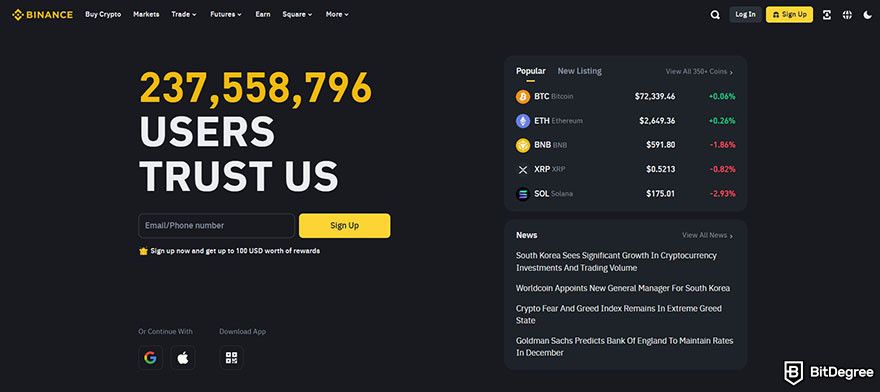
Several factors may affect your rates when it comes to Binance VS Gemini exchange fees. For spot trading, Binance uses a maker-taker fees model in addition to the tier-based discount. Additionally, users who hold a certain amount of BNB tokens can get their rates further reduced.
Here is a simple comparison of Binance VS Gemini fees:
| Exchange | Taker fees range | Maker fees range |
|---|---|---|
| Gemini | 0.03% – 0.40% | 0.00% – 0.20% |
| Binance | 0.02% – 0.10% | 0.01% – 0.10% |
Table: The comparison between Gemini's and Binance's maker-taker fees.
As you can see, Binance offers more competitive fee rates than Gemini. But what about deposit and withdrawal? Well, it depends on your preferred method and the type of currency you’re using. For example, Gemini charges no fees for fiat withdrawal using SEPA bank transfer, whilst Binance charges €1. However, keep in mind that Binance supports more payment methods when it comes to fiat deposit and withdrawal which give you better flexibility.

|

|
|
|---|---|---|
| - | - | |
| Free | 0.0001 BTC | |
| Up to 1% | Up to 0.1% | |
|
Visit site
Read review |
See TOP10 Brands
Read review |
Gemini VS Kraken Fees
Kraken is a well-established cryptocurrency exchange known for its reliability, security, and commitment to regulatory compliance. Kraken provides features for both beginners and advanced traders, including spot trading, margin trading, and staking services. It also supports futures trading and offers a professional trading platform, Kraken Pro, for users seeking advanced tools and lower fees.
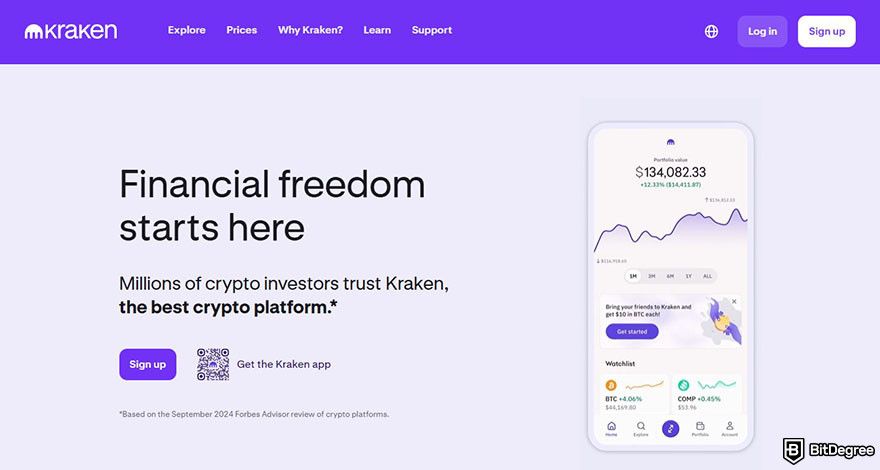
Buying crypto directly using a debit card on Kraken can incur relatively high fees. First of all, Kraken will charge you 3.75% of your order value, plus $0.25. In addition to that, you also have to pay the instant buy fee of 0.9% for stablecoins or 1.5% for other crypto assets. So you could pay around 5% in fees alone which is slightly higher than the Gemini fees.
However, you could reduce your fee rates using Kraken Pro, which uses a maker-taker fees model. Let’s take a look at how the fees compare between Gemini and Kraken Pro:
| Exchange | Taker fees range | Maker fees range |
|---|---|---|
| Gemini | 0.03% – 0.40% | 0.00% – 0.20% |
| Kraken | 0.10% – 0.40% | 0.00% – 0.25% |
Table: The comparison between Gemini's and Kraken's maker-taker fees.
Kraken Pro clearly turns the table with its competitive maker-taker fees. They are slightly lower than Gemini exchange fees. Remember that these rates apply to Kraken Pro’s spot trading feature. Other products such as margin and futures trading have their own rates.
As for withdrawal and deposit fees, both platforms offer different rates depending on which method you’re using. There are no charges if you’re using ACH to deposit or withdraw USD on Gemini and Kraken. However, Kraken charges around €0.90 - €1 for those withdrawing EUR using SEPA.
It is worth noting that Kraken offers more payment method options for fiat withdrawals and deposits, making it potentially more accessible.

|

|
|
|---|---|---|
| - | - | |
| Up to $60 | Free | |
| Up to 0.40% | Up to 1% | |
|
Visit site
Read review |
Visit site
Read review |
Understanding Crypto Exchange Fees
When using a crypto exchange, fees might seem like an extra cost, but they’re actually a vital part of how these platforms operate. Exchanges like Gemini charge fees to cover the infrastructure, security, and support that make trading safe and efficient. Here’s why paying fees is necessary and a breakdown of the typical types you’ll encounter on crypto platforms like Gemini.
Why Pay Fees?
Crypto exchanges handle vast amounts of data and transactions every second, requiring secure, robust systems. Fees contribute to how this system works. In a proof-of-work (PoW) blockchain like Bitcoin, your transactions are verified by miners who are rewarded in BTC from the transaction fees you pay[2]. They also help fund customer support and essential features that make platforms easier to use. With Gemini fees, you’re contributing to a safe and regulated environment, especially valuable when handling digital assets.

- Secure and reliable
- Accepts fiat currencies
- Lots of trading options
- Reputable exchange
- Accepts fiat currencies
- Offers various trading options

- Fiat currencies - accepted
- Simple to use
- Accepts only the most trustworthy cryptocurrencies
- A leading cryptocurrency exchange platform
- Best for beginner investors
- Accepts fiat currencies

- Fully reserved and transparent
- Multiple tradable asset classes
- Over 300 supported cryptos
- Over 300 cryptocurrencies
- Secure & transparent
- Fully reserved
Typical Types of Crypto Exchange Fees
When trading on Gemini, you’ll come across a few main fee categories, each affecting your transactions differently:
- Trading Fees: These are the most common and apply each time you buy or sell crypto. Gemini fees for trading depend on factors like your transaction size and whether you’re on the standard or ActiveTrader platform. You might also encounter maker and taker fees, which vary based on whether you’re creating or filling an order.
- Deposit Fees: While some exchanges charge fees for depositing funds, Gemini generally offers fee-free deposits via ACH transfers. However, wire transfers or other methods might include a fee. Understanding Gemini fees for deposits can help you choose the most cost-effective option.

- Withdrawal Fees: When withdrawing crypto or fiat currency, there are often fees involved. Gemini fees for crypto withdrawals, for instance, include a network fee, which can vary depending on the blockchain. Fortunately, Gemini offers a limited number of free withdrawals for certain assets, which can help you save.
- Payment Method Fees: Some payment methods, like credit card purchases, come with additional fees. Gemini fees for credit card transactions are typically higher than for bank transfers, so it’s wise to check before choosing a payment option.
Fees are part of any crypto exchange experience, but understanding Gemini fees in detail can help you make more cost-effective decisions while trading or investing. Knowing what each fee type covers allows you to manage your trades and withdrawals wisely, making sure your crypto experience is both smooth and secure.
Conclusions
Navigating crypto fees can feel like a maze, but understanding Gemini fees can make a big difference in managing your costs. Compared to exchanges like Binance, Coinbase, and Kraken, Gemini offers a unique structure that balances security and ease of use, though it may not always be the lowest-cost option. From trading fees to crypto withdrawals and card transactions, each fee type has its own impact on your overall expenses.
Gemini exchange fees can add up, especially if you’re an active trader or frequently transfer funds. But with the right strategies—like leveraging trading volume tiers or choosing fee-free withdrawal options—you can minimize these costs and get more value out of your crypto. Knowing when Gemini fees apply and how they compare to competitors means you’re equipped to make the most informed choices.
At the end of the day, every exchange has its strengths, and understanding their fee structures is key to finding the best fit for your needs. Hopefully, this guide gives you the clarity you need to make confident, cost-effective decisions when trading on Gemini. Happy trading!
The content published on this website is not aimed to give any kind of financial, investment, trading, or any other form of advice. BitDegree.org does not endorse or suggest you to buy, sell or hold any kind of cryptocurrency. Before making financial investment decisions, do consult your financial advisor.
Scientific References
1. John K., Rivera T. J., Saleh F.: Equilibrium Staking Levels in a Proof-of-Stake Blockchain;
2. Houy N.: The Economics of Bitcoin Transaction Fees.

